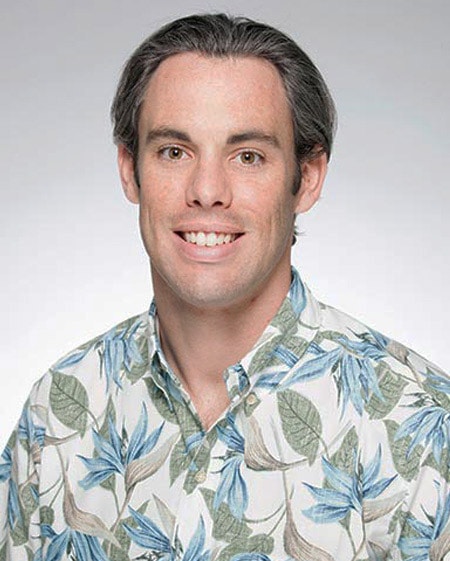
Michael Y. Packard, P.E., PTOE
Sr. Traffic Engineer
Working Remotely Results in Less Time in Cars
The recent Covid-19 pandemic and resulting island-wide social distancing policies have had a dramatic change on the way people go through their daily routines. While most thoughts go to the negative impacts this has had on people’s health, jobs, and the economy, there are some benefits to the mandated social distancing that shine a light on what is possible in a future that is likely to look very different from “business as usual.” And maybe this is a good thing, for a number of reasons.
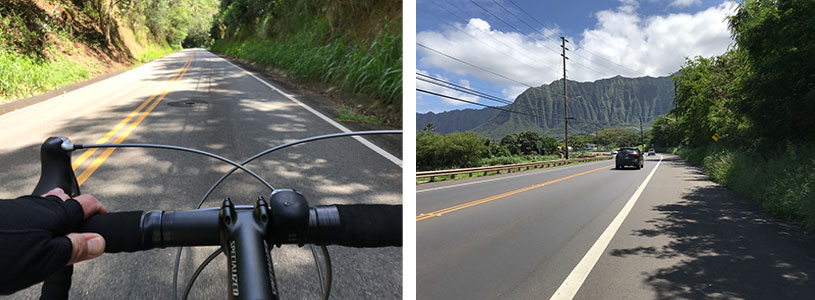
Recently I rode my bike around the east side of Oahu, starting in my home town of Kailua.
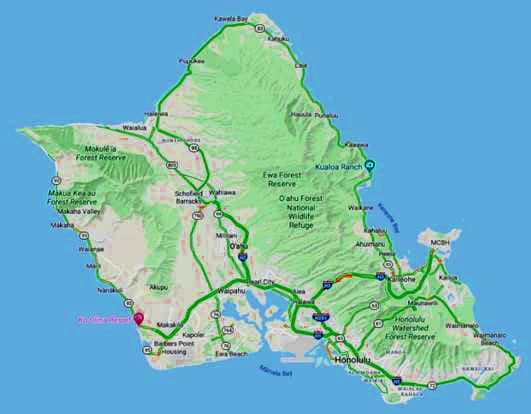
Unheard of absence of peak hour traffic.
Less Stress and Car Dependence. To start, as is the case with the majority of SSFM employees, work for the most part is being done remotely from home, reducing the need for people to commute to/from work. It has also kept kids out of school as they have also been participating in remote learning from home. Speaking for myself, and many others who have responded to national surveys, working remotely from home has reduced what otherwise was the most stressful part of my day. For me personally, it has also removed the only “need” I had to use a car on a daily basis. The huge reduction in traffic due to current social distancing policies is evidenced in looking at the Google Maps traffic layer during the PM peak hour. On a typical day, roads on Oahu are congested (color red) for a significant part of the day, leading to aggravation, stress, and lost time away from family or other things of priority. Now, even at peak hours the roadways are a sea of green lines.
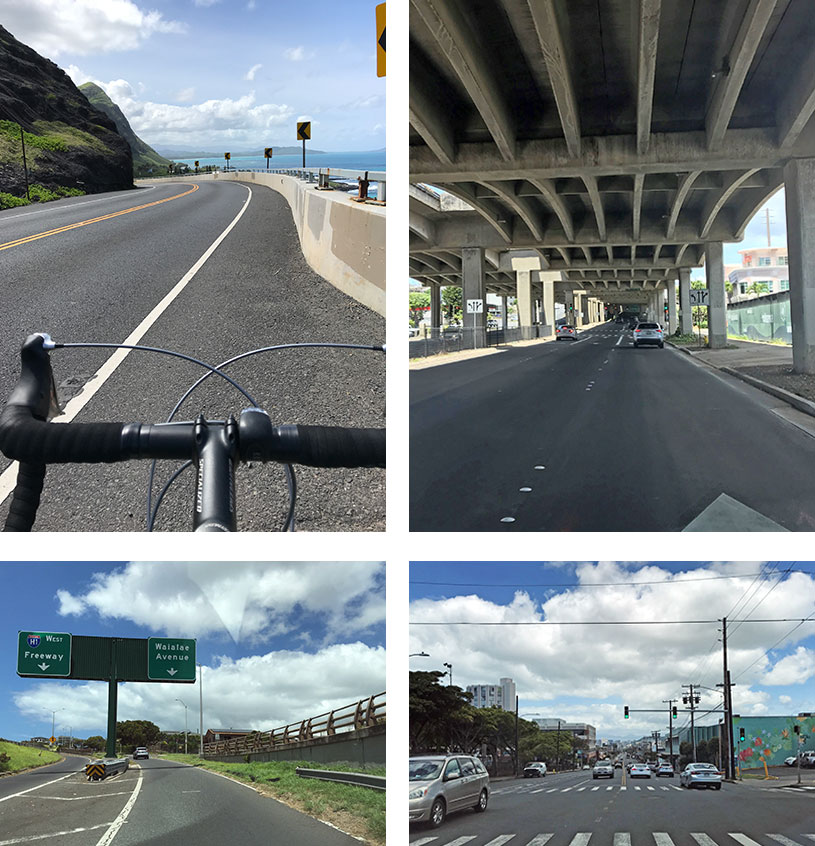
I biked through Waimanalo and Hawaii Kai along Kalanianaole Highway,
continuing into town along Waialae and Beretania Streets and through downtown.
Reduced Traffic Deaths. Stats compiled for the first three months out of the year show a reduction in all traffic related deaths. This is likely to be a temporary trend if we bounce back to business as usual, but the results are telling. If we as a State are going to legitimately seek a reduction in traffic-related deaths in keeping with Vision Zero, we may need to consider adopting permanent policies to lower traffic speeds and volumes, along with traffic-related emissions, stress, maintenance costs, and many other burdens of the pre-COVID system.
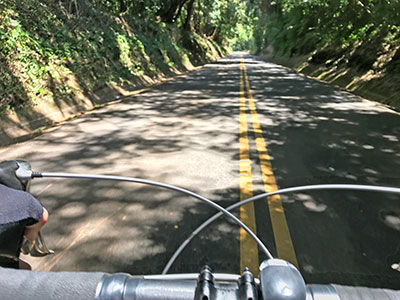
Riding up an empty Nuuanu Pali Drive was serene with barely a car on the road.
Rethinking Future Policy.What does this all mean? It means that implementing effective TDM measures is a real possibility that is being road-tested (pun intended) during the current pandemic and is shown to be both effective and beneficial. While it is not desirable to maintain these strict restrictions on businesses, and remote work may not be optimal all of the time for everyone, even a moderate increase in remote work could reduce the amount of time we all spend in our cars. Less time in cars results in lower emissions, traffic-related stress, and traffic-related deaths!!!
Working Remotely Results in Less Time in Cars

Recently I rode my bike around the east side of Oahu, starting in my home town of Kailua.

Unheard of absence of peak hour traffic.
Less Stress and Car Dependence. To start, as is the case with the majority of SSFM employees, work for the most part is being done remotely from home, reducing the need for people to commute to/from work. It has also kept kids out of school as they have also been participating in remote learning from home. Speaking for myself, and many others who have responded to national surveys, working remotely from home has reduced what otherwise was the most stressful part of my day. For me personally, it has also removed the only “need” I had to use a car on a daily basis. The huge reduction in traffic due to current social distancing policies is evidenced in looking at the Google Maps traffic layer during the PM peak hour. On a typical day, roads on Oahu are congested (color red) for a significant part of the day, leading to aggravation, stress, and lost time away from family or other things of priority. Now, even at peak hours the roadways are a sea of green lines.

I biked through Waimanalo and Hawaii Kai along Kalanianaole Highway,
continuing into town along Waialae and Beretania Streets and through downtown.
Reduced Traffic Deaths. Stats compiled for the first three months out of the year show a reduction in all traffic related deaths. This is likely to be a temporary trend if we bounce back to business as usual, but the results are telling. If we as a State are going to legitimately seek a reduction in traffic-related deaths in keeping with Vision Zero, we may need to consider adopting permanent policies to lower traffic speeds and volumes, along with traffic-related emissions, stress, maintenance costs, and many other burdens of the pre-COVID system.

Riding up an empty Nuuanu Pali Drive was serene with barely a car on the road.
Rethinking Future Policy.What does this all mean? It means that implementing effective TDM measures is a real possibility that is being road-tested (pun intended) during the current pandemic and is shown to be both effective and beneficial. While it is not desirable to maintain these strict restrictions on businesses, and remote work may not be optimal all of the time for everyone, even a moderate increase in remote work could reduce the amount of time we all spend in our cars. Less time in cars results in lower emissions, traffic-related stress, and traffic-related deaths!!!
Category:
Mobility/Complete Streets
